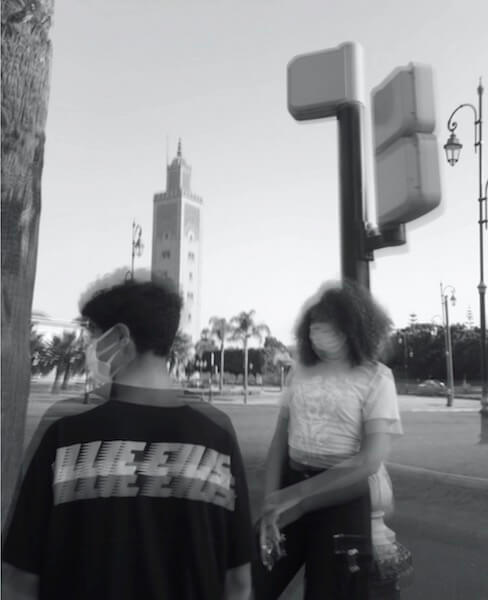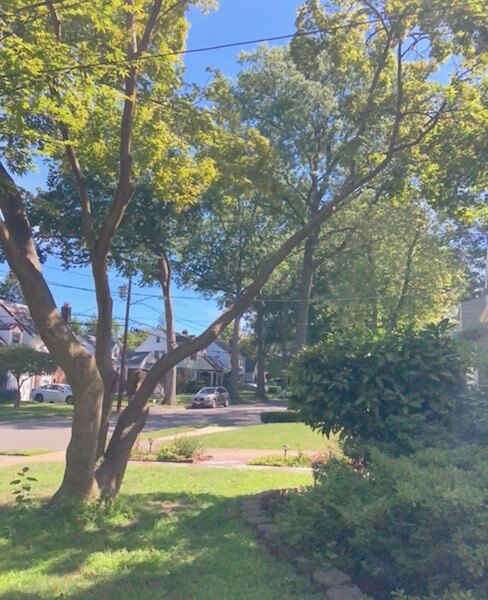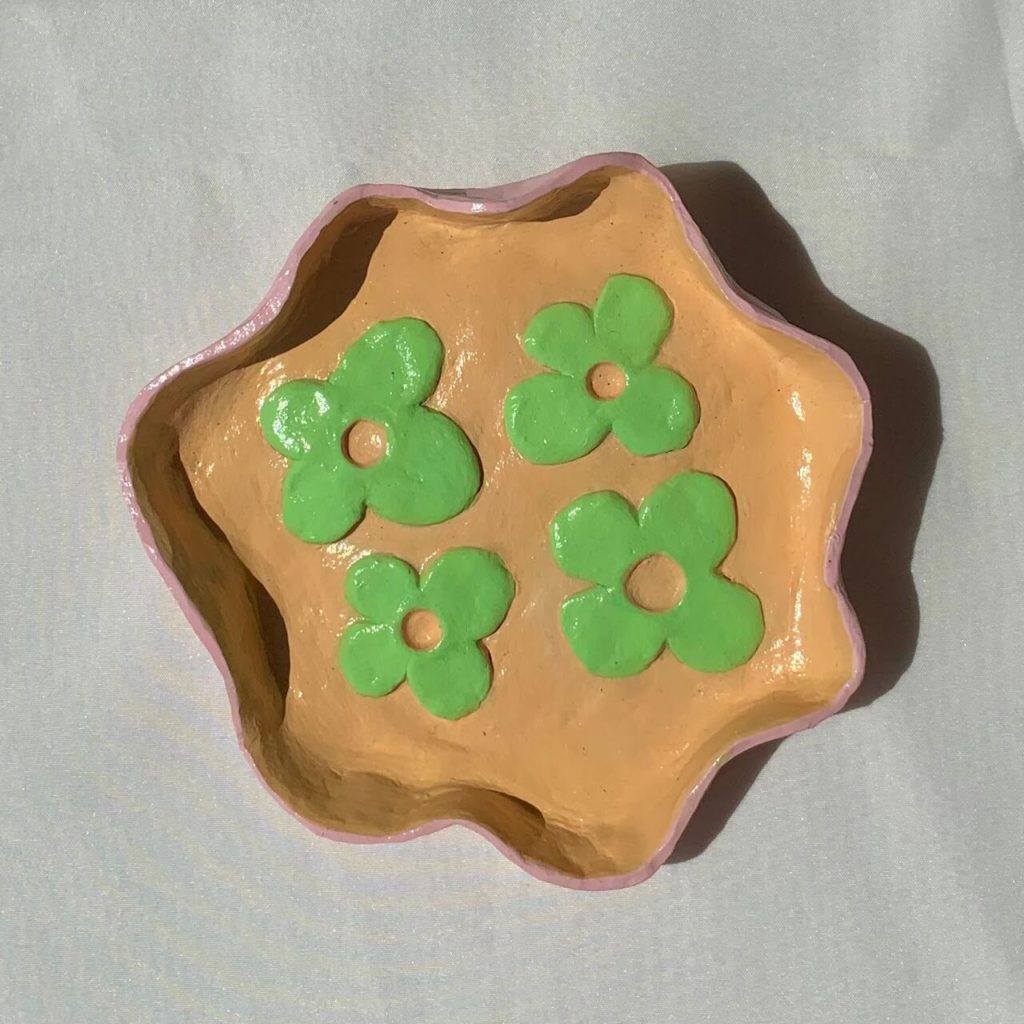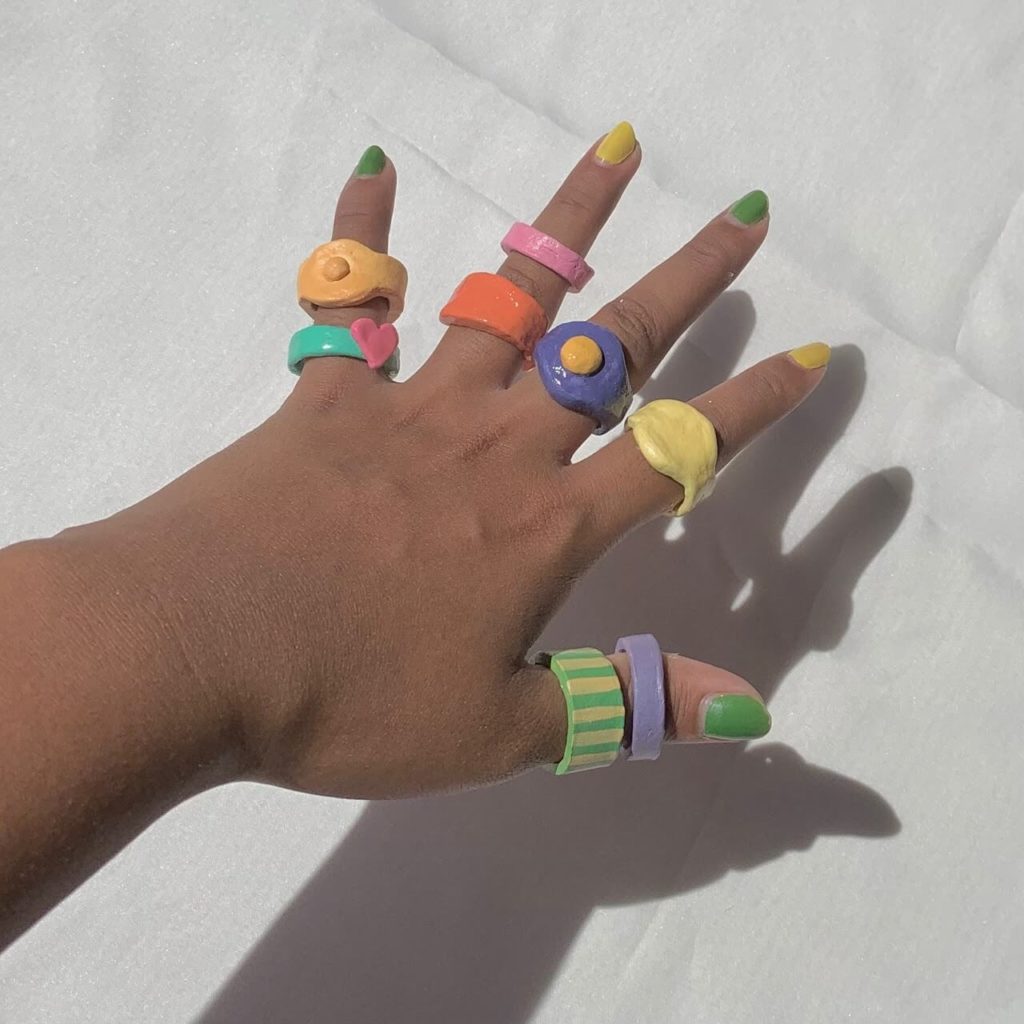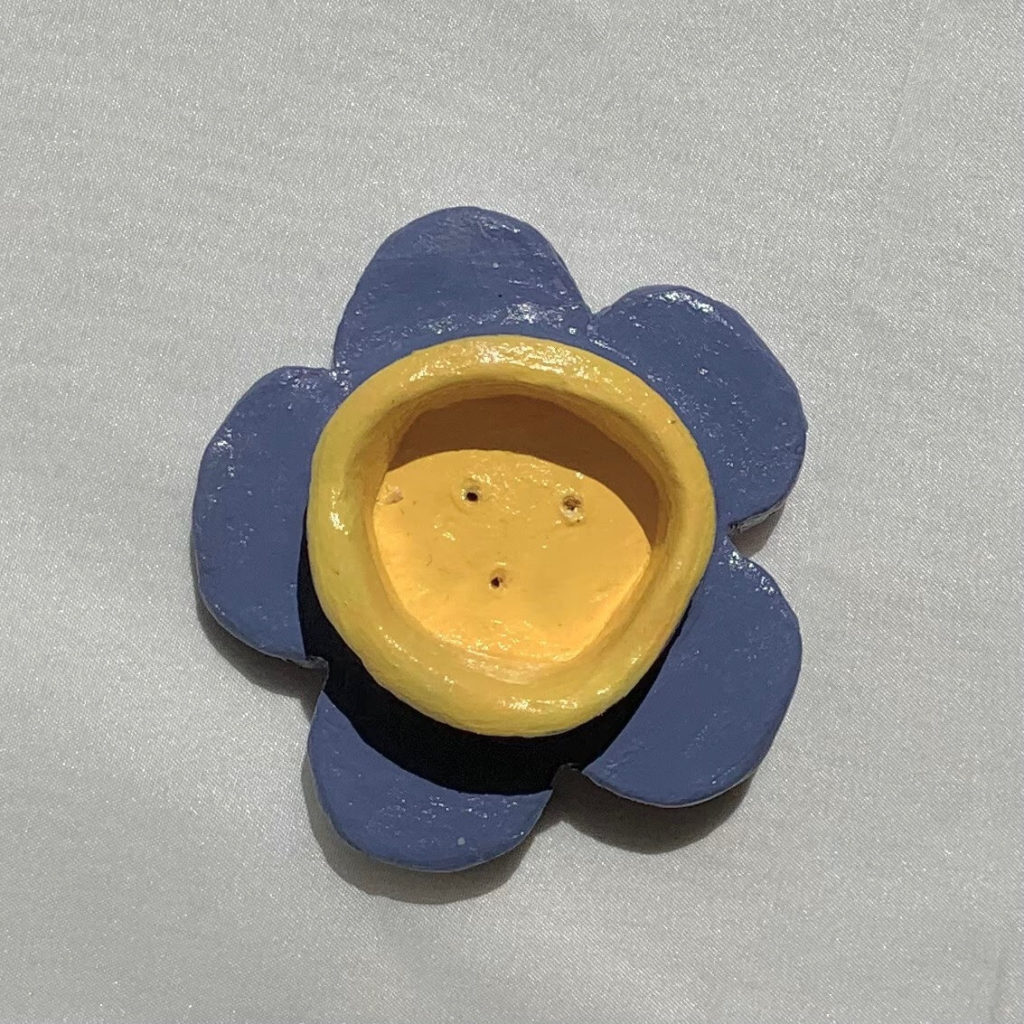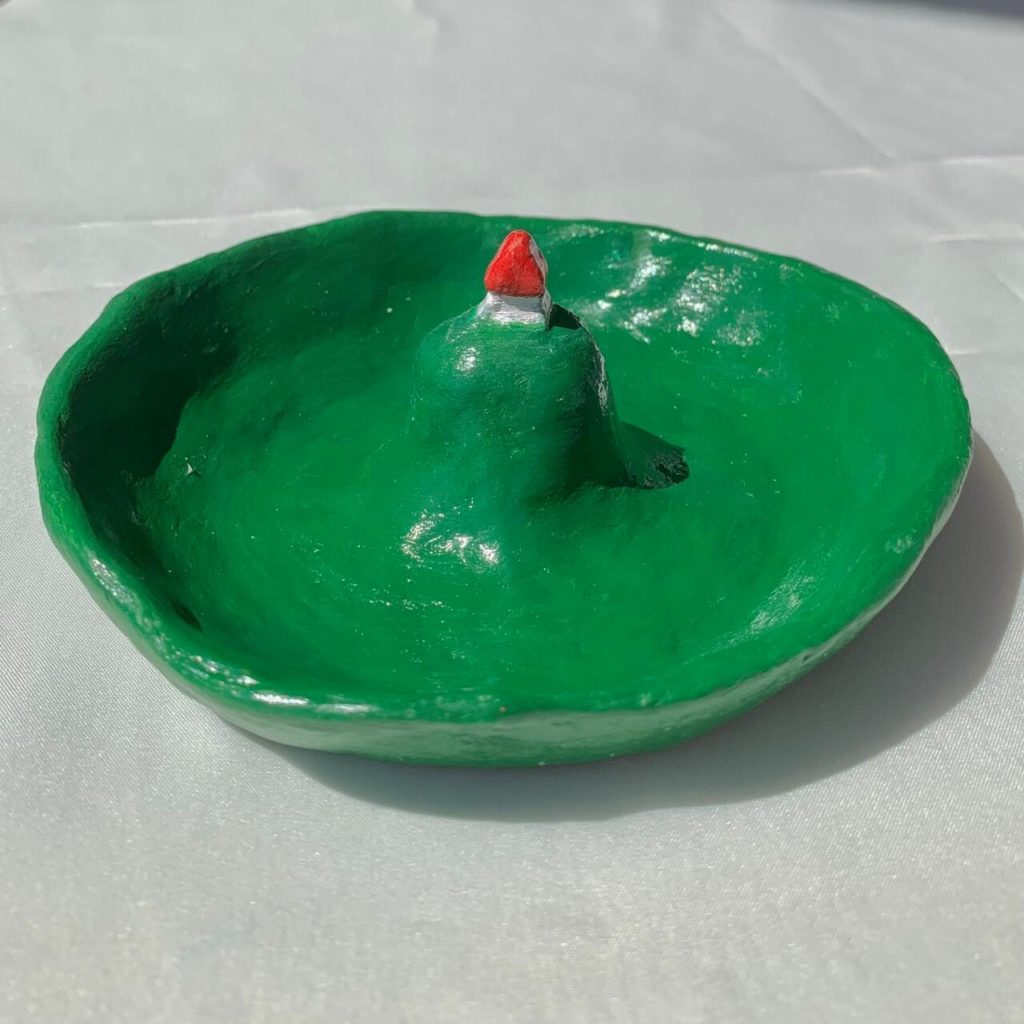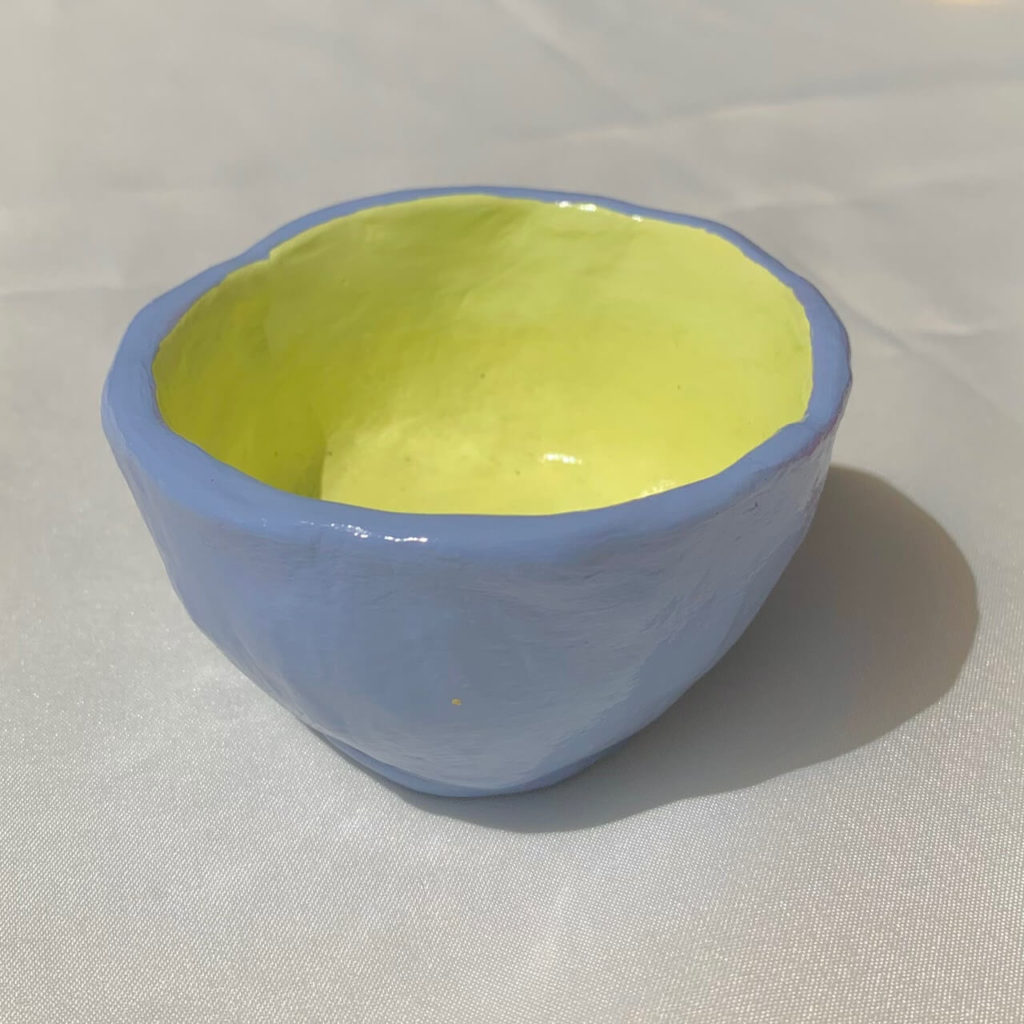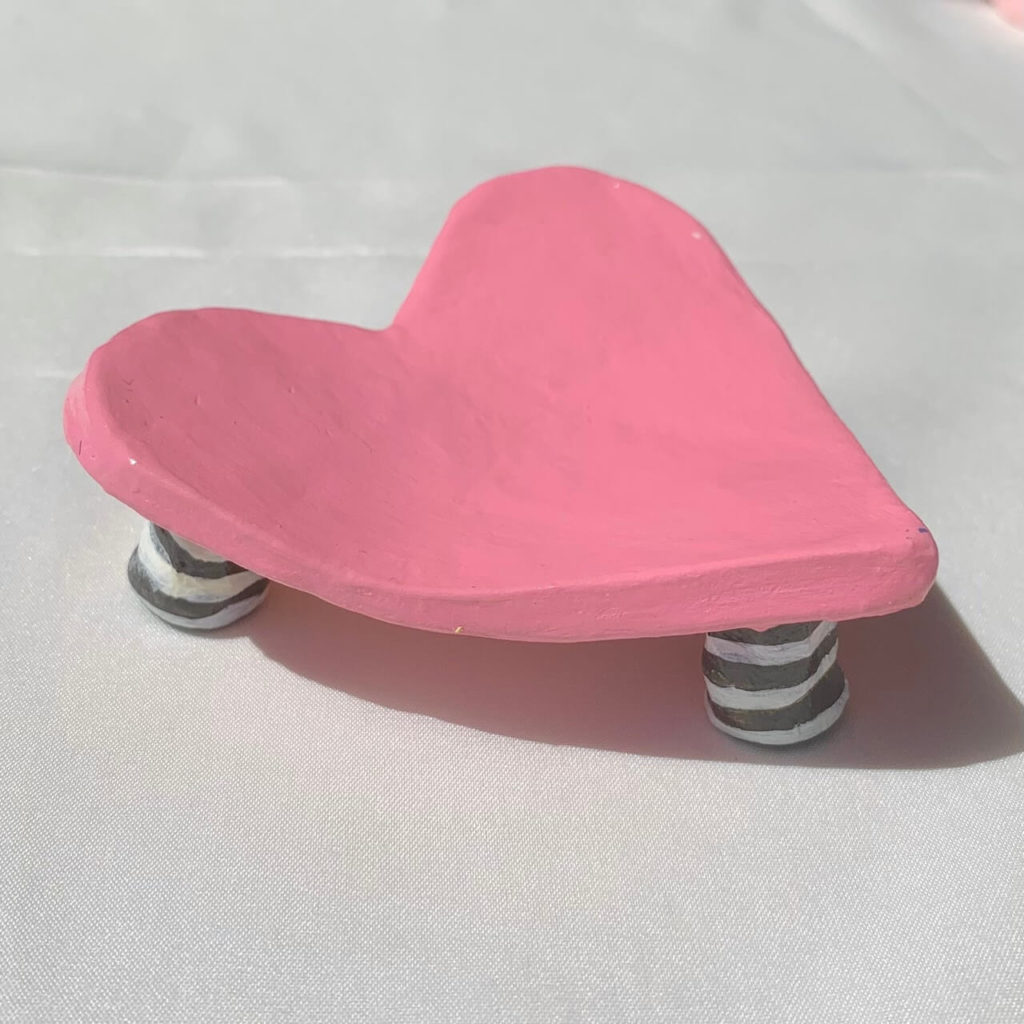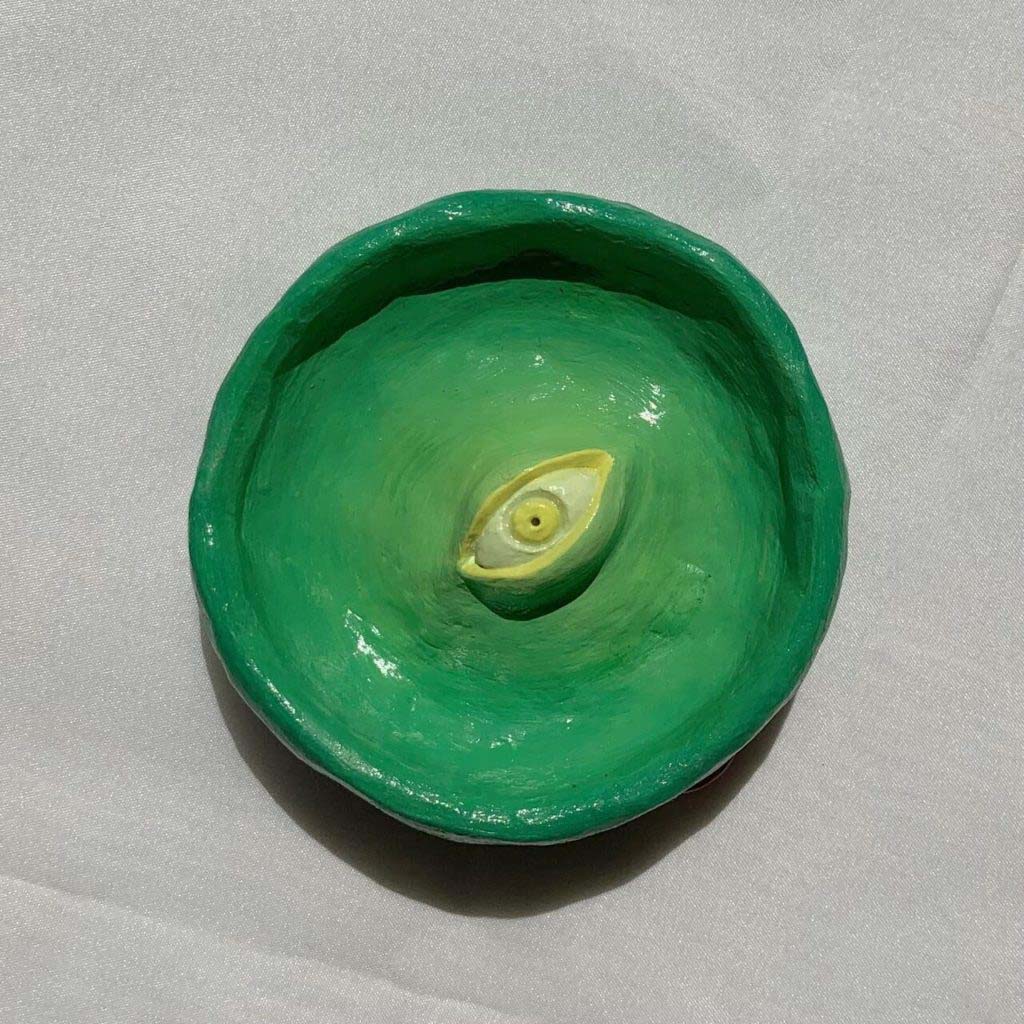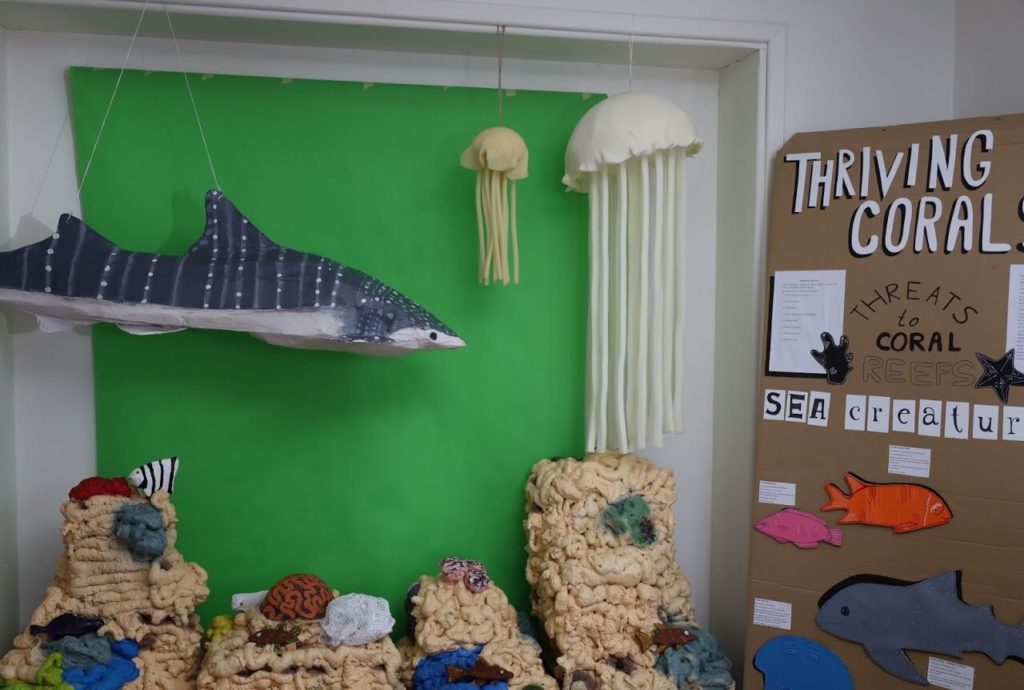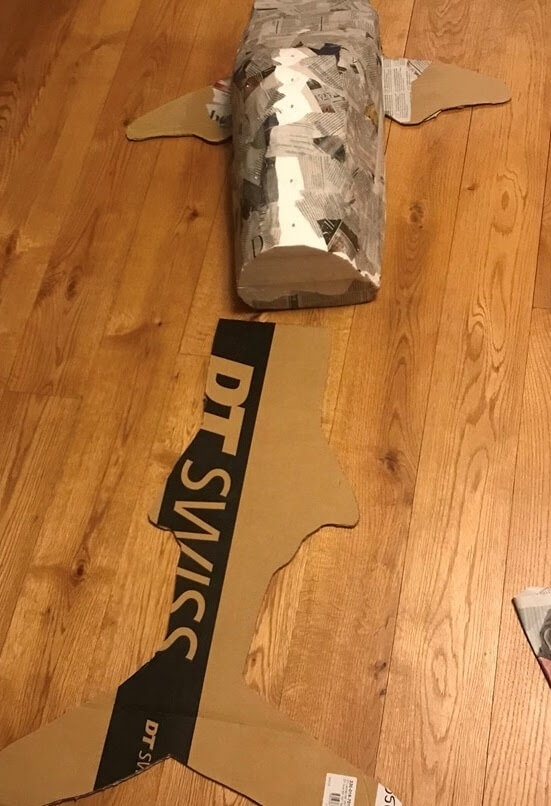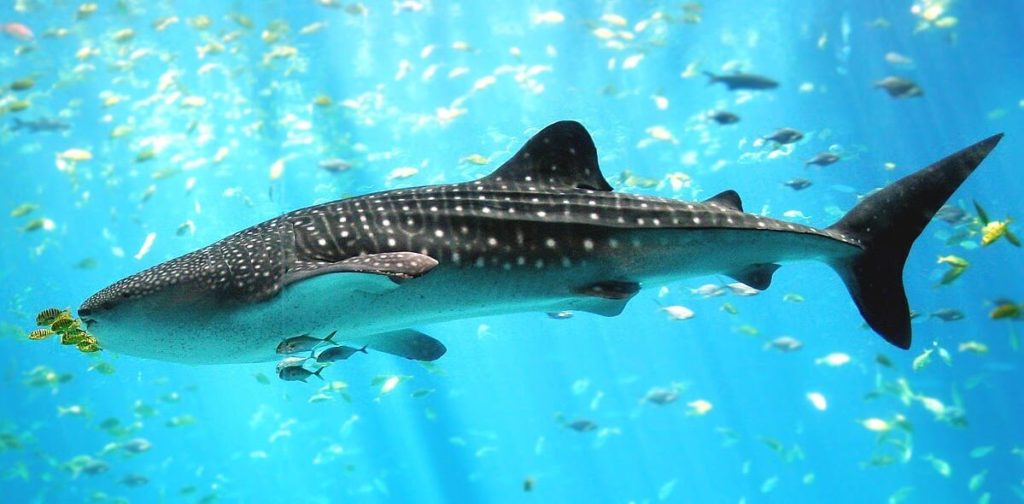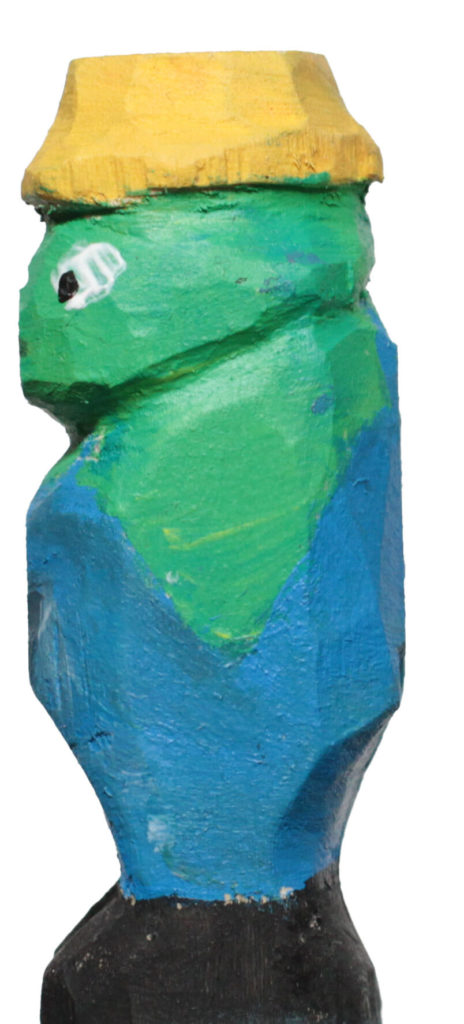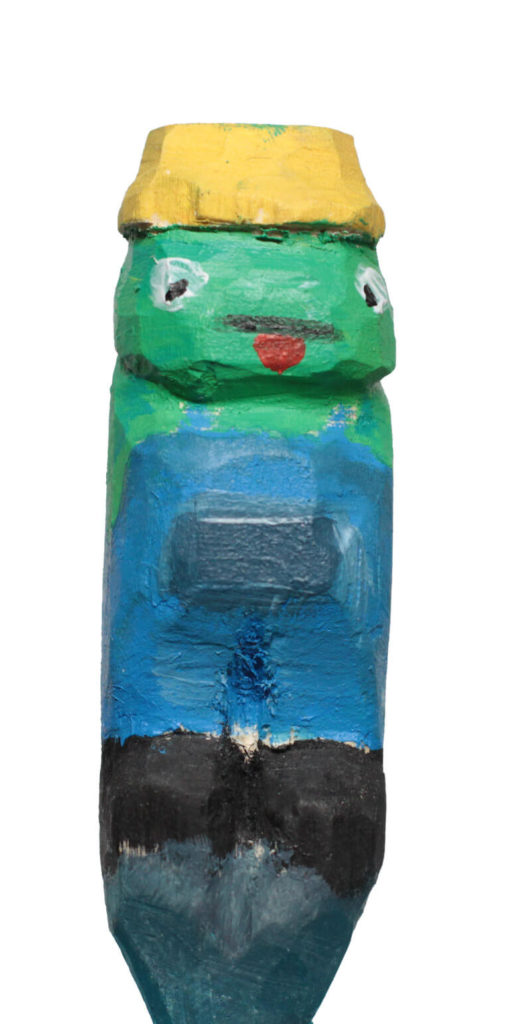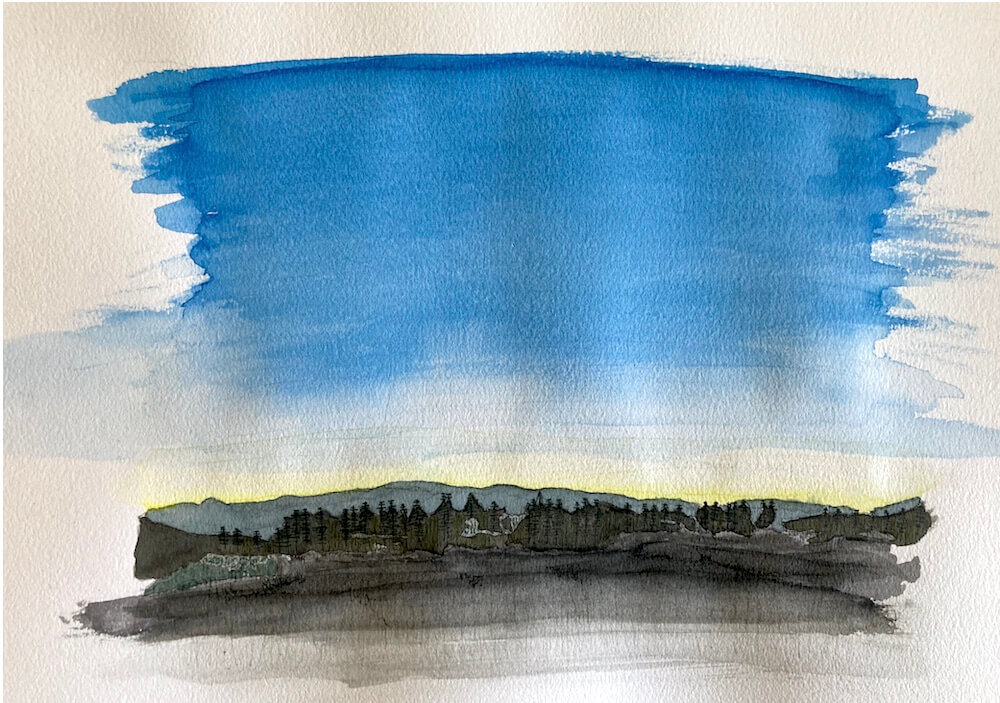1) Hi Nada, can you tell us what you've been up to since graduating from THINK Global School in 2022? Since graduating in 2022, I've been pursuing a passion I found while at TGS, sustainability, and I am currently majoring in engineering in renewable energy systems at Al Akhawayn University, in Ifrane, Morocco. But there is way more than that! I've had a chance also to explore the world of...
Read MoreTerm 3 (our winter term) is officially in the books here at THINK Global School. Although our students could not travel due to the ongoing pandemic, they again impressed us through their creative approaches to project work and unyielding community spirit.
This post sheds light on some of our CM1 cohort’s highlights (more on what cohorts mean here), including a look at our favorite outcomes from the Mind and Body Balance teacher-led module and projects devised entirely by our students.
Promoting Sustainable Lifestyles Through Pixki
Last year, three of our students from Mexico collaborated on designing a new school core value. The value, Pixki, is Aztec in origin and means “The Guardian” in the Náhuatl language. Pixki states that students should:
Modify their actions to protect the environment while adopting a more sustainable lifestyle. -Pixki core value
Many of our students have taken this action to heart by participating in the Pixki Club. This term, they turned their attention to the topic of ocean sustainability. Two of our CM1 students, Zuzzana and Viktoria, led a workshop on coral reefs and restoration. The pair informed students about the threats to coral reefs and led an activity where students planned and budgeted for their own coral reef plantation in India. Students considered the different factors that affect a restoration site and competed to create a reef with the most corals growing.
United Nations Sustainable Development Goals Summit
Ten students also participated in the United Nations Sustainable Development Goals Summit during Term 3. The debate-style conference looked at the 17 UN Sustainability Goals’ overlapping complexities, and participants heard from guest speakers, analyzed case studies, and contributed to campaign design sprints.
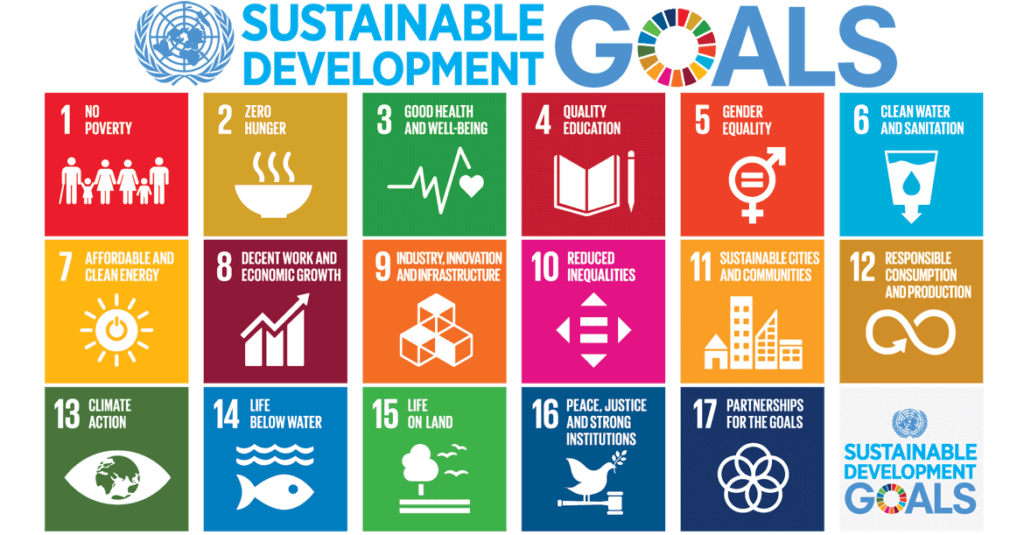
THINK Global School takes the 17 Sustainable Development Goals seriously and they are regularly weaved into our projects to help our students build a more sustainable future for all.
Photography Club
Our students also led workshops this term focused on film photography and tips for editing pictures. They discussed how to shoot with film and why it’s a unique art form and how to do basic photo editing in Adobe Lightroom and Adobe Photoshop.
Project-Based Learning at THINK Global School
If you are unfamiliar with how learning works at THINK Global School, the key thing to keep in mind is that projects form our curriculum’s backbone. Rather than be lectured by our educators and take tests to assess their knowledge, students at THINK Global School participate in a variety of projects each term that task them with solving a driving question.
The project types are:
- Personal projects are designed by our students.
- Teacher-led modules are created by and overseen by our educators.
- Mastery projects provide students an opportunity to show their expertise in a topic.
- Service-learning projects address genuine community needs.
Students typically participate in one teacher-led module, one personal project, and one service-learning project each term. Each project is centered around a driving question, which students work towards answering over the course of the eight-week term.
Mind and Body in Balance Module
This term, all of our CM1 students participated in the Mind and Body Balance teacher-led module.
In the Mind and Body in Balance module, students worked to answer the following driving question: How might we combat the impact of global restrictions through the use of holistic health and well-being strategies?
Students heard from guest speakers who specialize in a range of fields connected to mental health and well-being throughout the module. Each speaker offered unique insights as well as strategies for students to try out.
As part of their project, students followed a personal plan to engage with a set of strategies, track their progress, and evaluate if the process worked for them.
By the end of the term, students created a personal holistic health and well-being plan based on their insights.
Below you can find highlights from our students’ Mind and Body in Balance project work.
Mindfulness and Ceramics by Gigi E.
What were your goals for this module? How did you achieve them?
For this module, I wanted to focus more on the process than the final product. I wanted to incorporate the TGS core value of /kaizen, a/ Japanese term meaning “change for the better” or “continuous improvement.”
I set weekly and daily goals throughout the module to gradually push me further beyond my limits. For example, I started the first week with sporadic 15-minute meditations, which progressed into consistent 30-minute meditations at the last week. I also began with zero knowledge of working with ceramics. Now, I am very confident using different hand-building clay forming techniques. There is still a lot of room for improvement (as always), but I am happy with all the experimentation I was able to do with the module.
Why did you choose your specific focus area?
As a part of the art focus, I chose to work with ceramics because it is a medium that I’ve wanted to work with for so long. I consider myself an artistic person, so I’m constantly trying to find ways to improve my creative process. This module was the perfect way to do that.
What new things did you learn about yourself? Did you try any new mental health/wellbeing strategies?
My wellbeing strategy comes in three parts: meditation, yoga, and tech-free mornings.
For meditation, I experimented with a bunch of different types, such as metta meditation, sound meditation, aand mindful breathing exercises. I found that I really enjoyed metta meditation, a kind of Buddhist meditation, also known as loving-kindness meditation.
I enjoyed connecting my body movements with my breath and realigning my mind to start or end my day with yoga. Some of my favorite yoga YouTube Channels are “Yoga with Tim” and “Yoga with Adriene.”
I also tried to spend the first thirty minutes of my day without technology, so I made sure that I didn’t check emails or social media. It went really well at the beginning but progressively got harder. I found that it was an easier task when I woke up earlier, but with late-night meetings, I woke up later to maintain eight hours of sleep each night. I decided to prioritize my sleep but kept my screen time to a minimum throughout the day.
Creating a 3D Coral Reef Model by Zuzanna W.
Project Details: Photos of the model against a green screen background. Featuring a whale shark (left) made of paper and a wall (right) with activities for kids. Hopefully, this model can travel to a school one day to bring reefs closer to those who have never seen them.
Other species featured include the moonlight jellyfish, a humbug dascyllus, and a squirrelfish. The reef was mostly inspired by Red Sea reefs, although it contains some other elements for educational (and fun) purposes.
What were your goals for this module? How did you achieve them?
My goals were to finish my model of a coral reef from recycled materials (TV packaging and old mattresses) and dive into philosophy as my mental wellbeing strategy.
Why did you choose your specific focus area?
I chose the art focus area because I knew it would allow me to step away from the computer and do something different this term.
What new things did you learn about yourself? Did you try any new mental health/wellbeing strategies?
I used to think that I do not enjoy philosophy, but I changed my mind after this term. Exploring a new subject, in this case, different concepts in philosophy, ended up being my favorite mental wellbeing strategy because it allowed me to think about the world in a new way.
Woodcarving by Effie
What were your goals for this module? How did you achieve them?
In this module, I wanted to work on staying as far away from the computer screen as possible. I wanted to have a physical final product while also having a lot of wiggle room to really adapt the project as I went along. I wanted to meditate, reduce my screen time, and just remove lots of processed sugar from my diet.
Why did you choose your specific focus area?
This term, I chose woodcarving as it’s something that has for a long time interested me and is entirely off-screen. It also posed a challenge with it all being 3D, which I had not really practiced with. It was physical and intricate, allowing me to zone into what I was creating.
What new things did you learn about yourself? Did you try any new mental health/wellbeing strategies?
I learned that I already had a good base of knowledge in mental wellness and nutrition. For the duration of the term, I played around with meditation by exploring different methods and philosophies. I especially liked the Zen meditation. It worked well for me and helped me categorize my emotions and what I had to do that day.
Watercolor Painting by Rachel C.
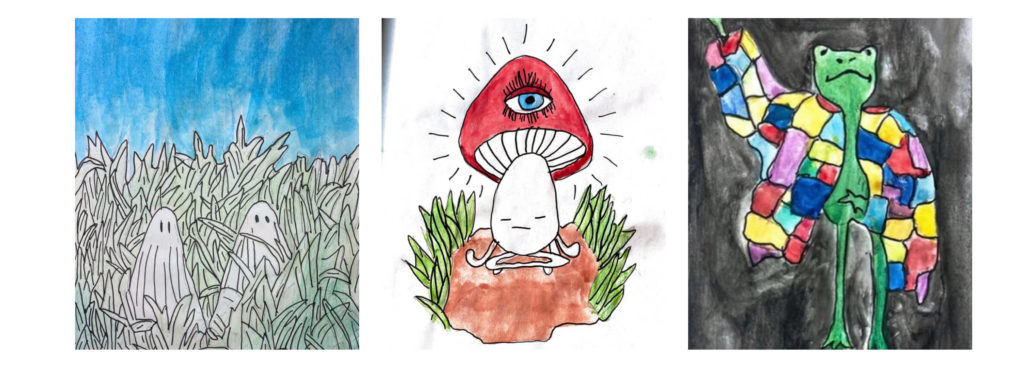
What were your goals for this module? How did you achieve them?
My two main goals were to develop a very basic understanding of how I can use watercolor, as I have no experience with using it in the past. I also wanted to approach each Mountain Monday session and mental wellness strategy with a very open mind. To reach my watercolor goal, I used a lot of trial and error and researched common watercolor techniques and processes such as dry and wet washing, wet-on-wet painting, underpainting, layering, gradients and color blending. As I was working on my second goal, I kept the core value of 改善 Kaizen, self-examination, and self-growth in mind.
Why did you choose your specific focus area?
I chose art to be my focus area for the term because while I have always loved doodling and sketching, I never had the time to try to improve my skills within the area.
What new things did you learn about yourself? Did you try any new mental health/wellbeing strategies?
I learned that traditional mental wellbeing strategies, such as meditation and breathing exercises, don’t work well for me. I grew frustrated now and then with why they wouldn’t work for me. Discussing my frustration and researching why I don’t feel the strategies are effective has been incredibly useful in understanding myself and how I can look at my mental wellbeing in the future.
Centered Songwriting by Mila F.
What were your goals for this module? How did you achieve them?
For this module, I found myself focusing more on the actual process than the final product. I wanted to challenge myself by writing a second song without using any musical technology. As part of my mental wellbeing strategies, I decided to center my inspiration in one place and analyze where and how I get my creative ideas. I realized that when writing music I get inspired by the environment surrounding me, so as a main focus for this summative project I decided to go on walks in the nature around me to find inspiration. Instead of using my phone to write things down, I would bring my journal.
My songwriting is usually random because I never plan for it. Whenever an idea comes, it can be hard at times to get another that follows. My biggest goal was to make my creative mindset adapt to a process. Going outside and getting fresh air is the time to brainstorm.
I struggled at the beginning but forced myself to walk every day in hopes of thinking of a new source of creativity. Sometimes, when I didn’t feel like writing lyrics, I would draw or write. Whatever popped into my mind while being outside was used in the song.
Why did you choose your specific focus area?
Music is my biggest passion, and I only finished my first complete song last term. I was very excited to continue creating new sounds and explore a different approach to doing so. Something that has always helped me deal with my mental health is music. For me, it’s a source of therapy, it’s what keeps me grounded and happy.
What new things did you learn about yourself? Did you try any new mental health/wellbeing strategies?
During this term, the mind and body balance module has surprised me. At first, I did not take mindfulness seriously and did not expect to put it into practice. I did not expect myself to invest this much time into my mental health because I thought that how I was feeling/acting was normal.
These mental wellbeing strategies made me a lot more aware of things I should be doing to take care of myself. I did a different mental wellbeing strategy every week and explored how to improve my methods. I am planning on spending more time exercising, reading, journaling and cooking.
All the routines I went through seemed like something I should be developing in my free time. I am so glad I got educated on this topic and now know what I should add to my daily schedule. I am happy THINK Global School took a whole term to focus on its students’ mental health and guide them to do something that will impact their emotions.
Personal Projects
The Underwater World: Marine Biology by Zuzanna W.
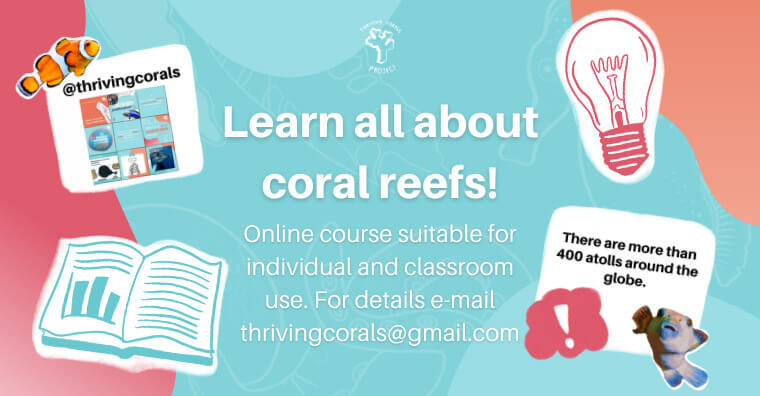
Visit the site here: https://thrivingcorals.thinkific.com/courses/the-underwater-world-marine-biology
Driving Question: How can I create engaging content for my online course about the underwater world?
What are you passionate about that led you to choose this project?
I am passionate about marine biology and everything ocean-related, plus I really enjoy digital illustration. Creating an online course felt like a perfect mix of both.
What do you hope people will get from looking at your page?
I hope you might want to learn more about coral reefs from the online course, but also take action to protect our oceans.
What was your initial idea, and what did you want to do/learn with this project?
My initial idea was to make short videos, just me against a white background, talking about the reefs. I wanted to learn more about marine biology and create something others can listen to.
Did your project develop and change from your initial idea? If so, how?
The idea has evolved a lot; ultimately, I looked into illustration, animations, and extra exercises to create more engaging content for the online course.
What are your big takeaway lessons from this project?
Video editing takes A LOT of time.
Drawing Skills Improvement by Mateo C.
Driving Question: How much can I improve my skill of applying colors while designing over the course of a term?
What are you passionate about that led you to choose this project?
I wanted to improve my skills in managing colors in various artistic scenarios with different techniques and tools. These skills that I acquired will be used in my Mastery Project that I’ll be beginning next school year.
What do you hope people will get from looking at your page?
That since we all know we have a weakness in an area we are passionate about, dedicating just a few hours a week for two months can deliver significant progress.
What was your initial idea, and what did you want to do/learn with this project?
I wanted to combine my mastery project with the projects I was going to do this term. Therefore, since the first step of my Mastery is to improve my current designing skills, I decided to divide this work into multiple projects. For the mind and body module project, I focused on the sketching techniques/ skills side of things. For my personal project, I focused on the color applying/ creativity flow side of things.
Did your project develop and change from your initial idea? If so, how?
Well, I really didn’t change the main idea or the structure of the project because it was pretty straightforward, but to be honest, there were some logistical adjustments, mainly because of how the course I took was structured.
What are your big takeaway lessons from this project?
That I should always plan my project having the mentality of “a thousand things might interfere,” so that if any of those things happen I have a solution already prepared for it.
Mastery Projects
The West Egg by Hanna Westphal
Driving Question: How can I make a farm to table egg delivery service become a viable business in a suburban community?
What are you most proud of?
I’m most proud of the extremely useful life skills I learned throughout this process….and that I made $485 of total income.
What are the biggest lessons you learned through the process of your mastery project?
The biggest thing I learned throughout this project was grit and resilience. More things went wrong in this project than went right, and I learned how to get through each one in a calm and organized manner.
Service Learning Projects
Educating Youth About Plastic Packaging by Teddy Farmer
What were your goals for this project? How did you achieve them?
My main goal: was to educate children in my Iceland community about plastic packaging overuse and alternatives to plastic packaging being tried at home. My project was a four-week-long workshop/mini-course at my local elementary school. I taught about the causes of, effects from, and solutions to plastic packaging overuse in the food and consumer items sectors.
What are you most proud of?
The positive feedback I received from some students indicated that my lessons had resonated with at least a part of the class I was teaching to.
What are the biggest lessons you learned through the process of your service project?
- Kids respond better to varied, multimedia teaching methods than to more traditional ones
- The tone of voice is an important thing when trying to keep people’s attention on you
- Often it’s best just to let the participants do their own thing and see what they come up with



